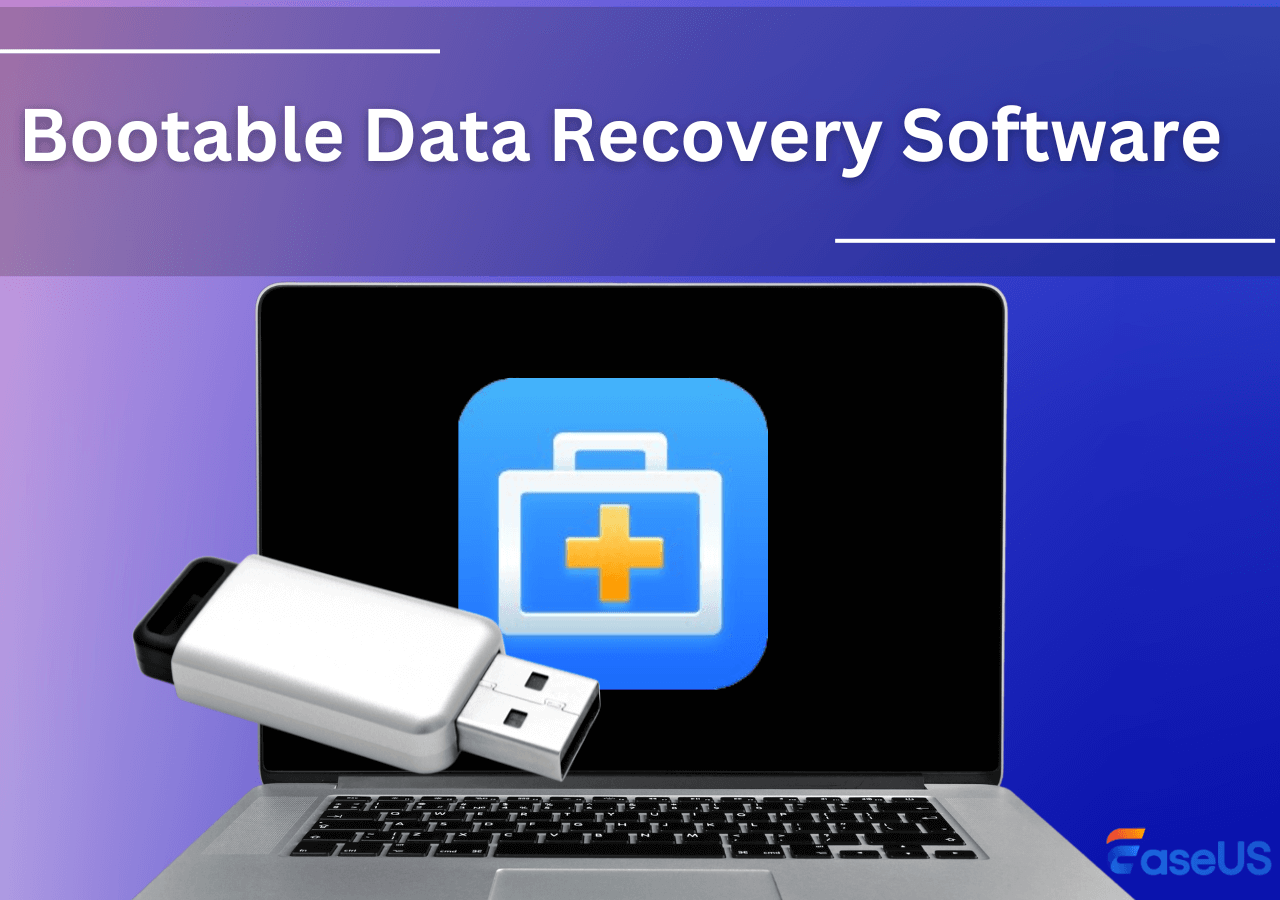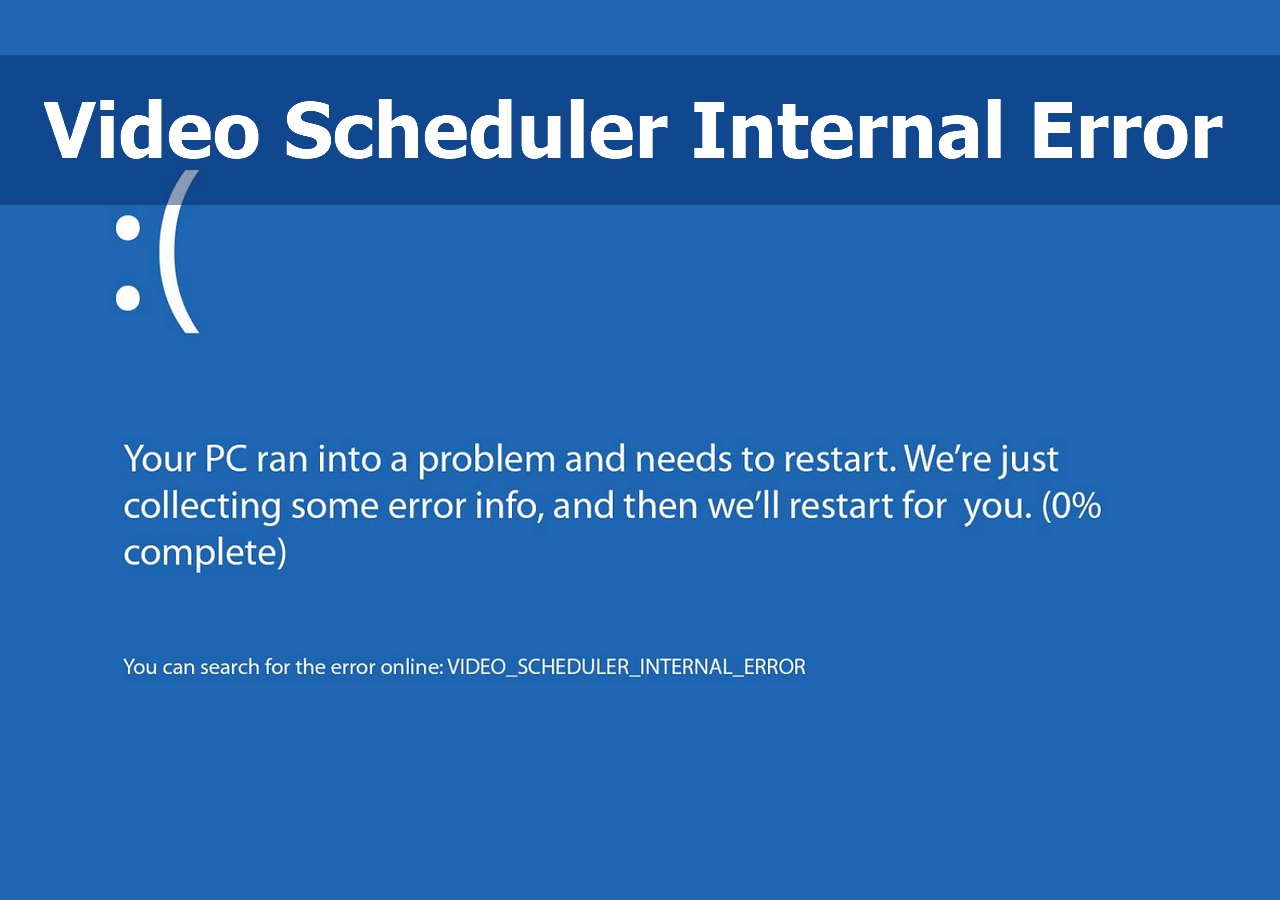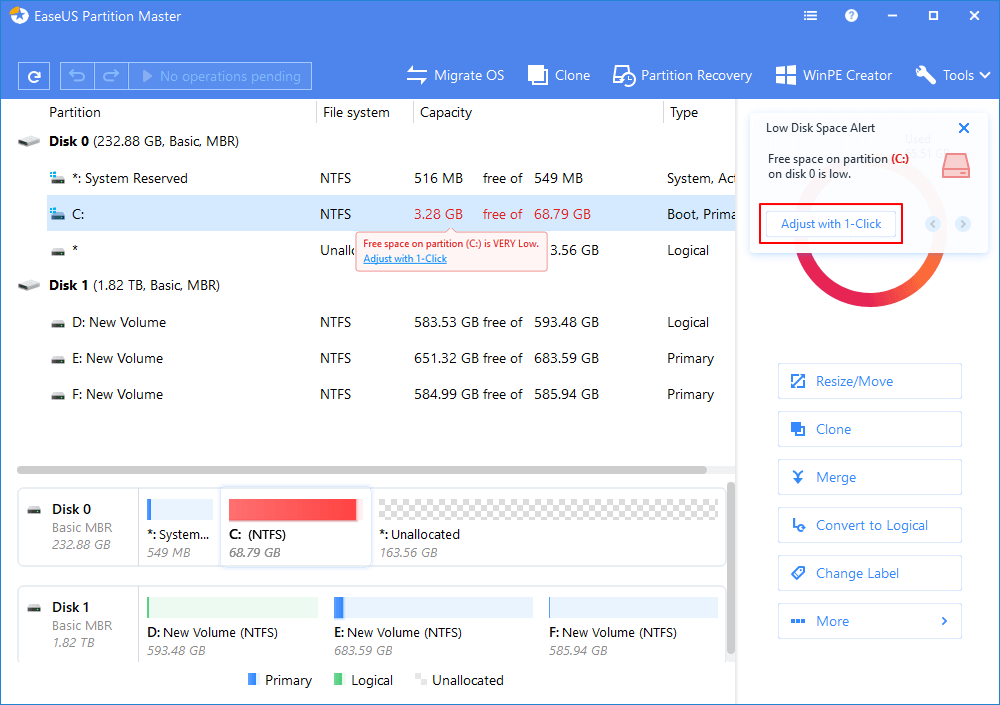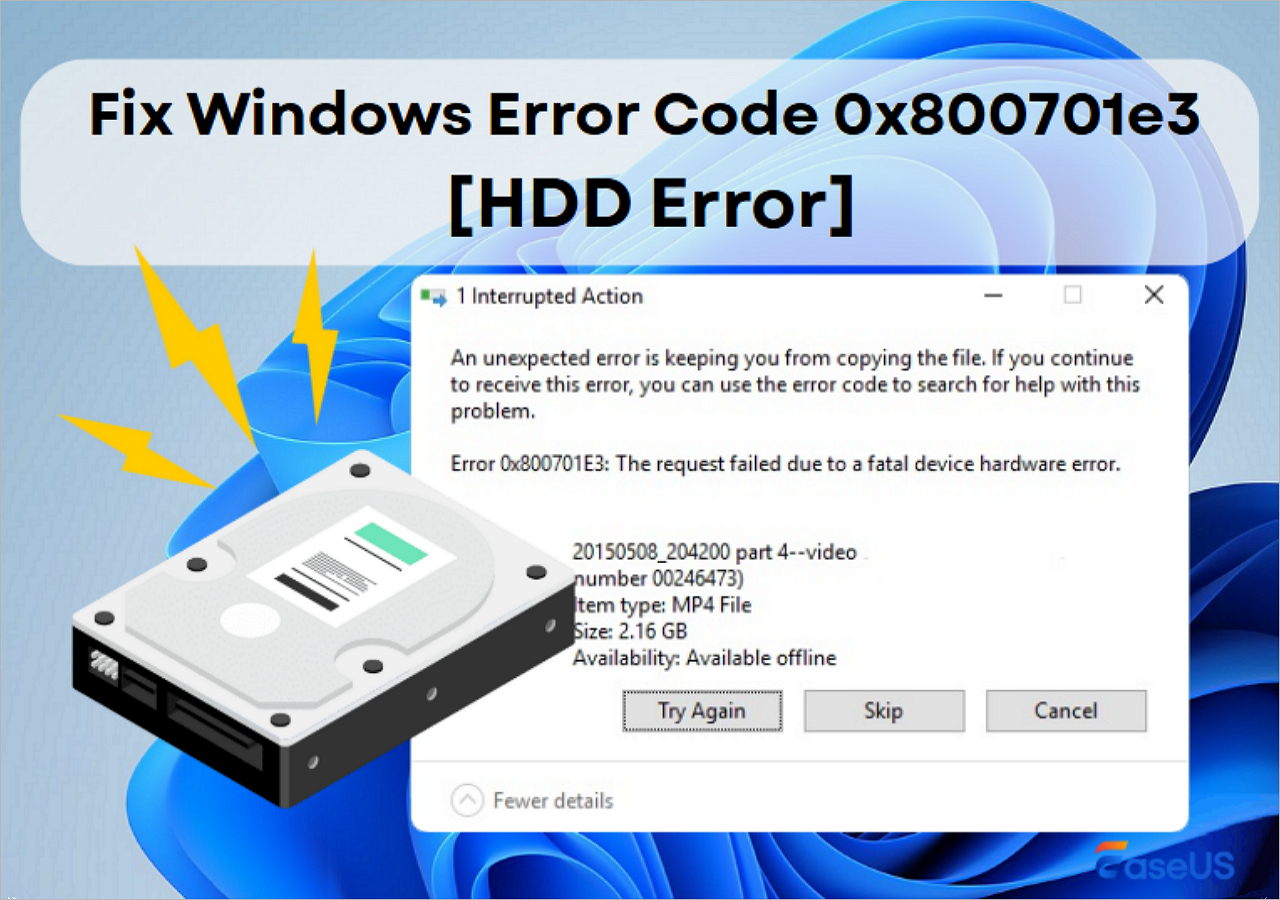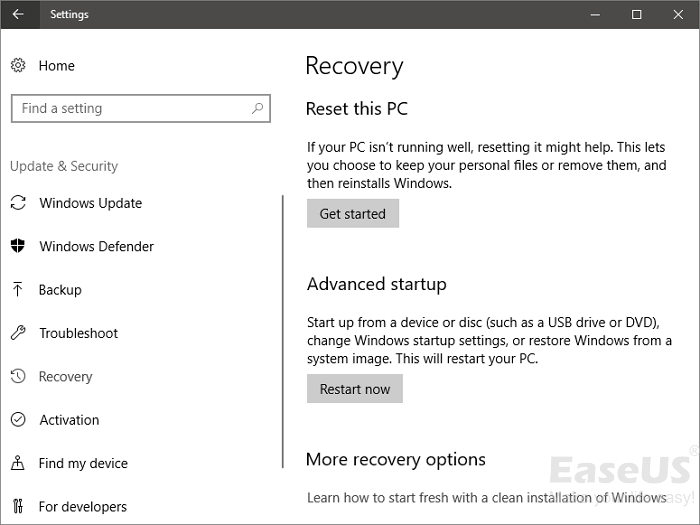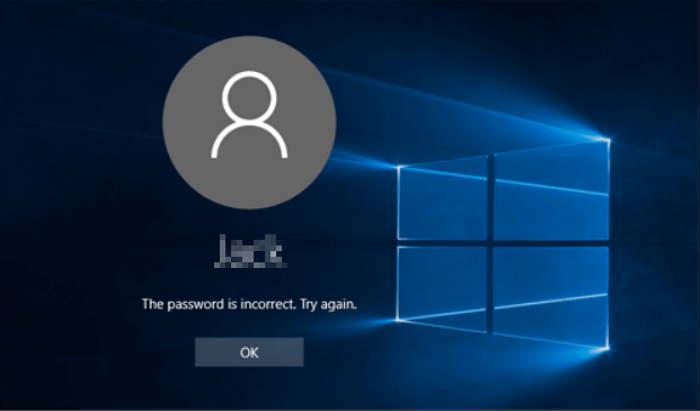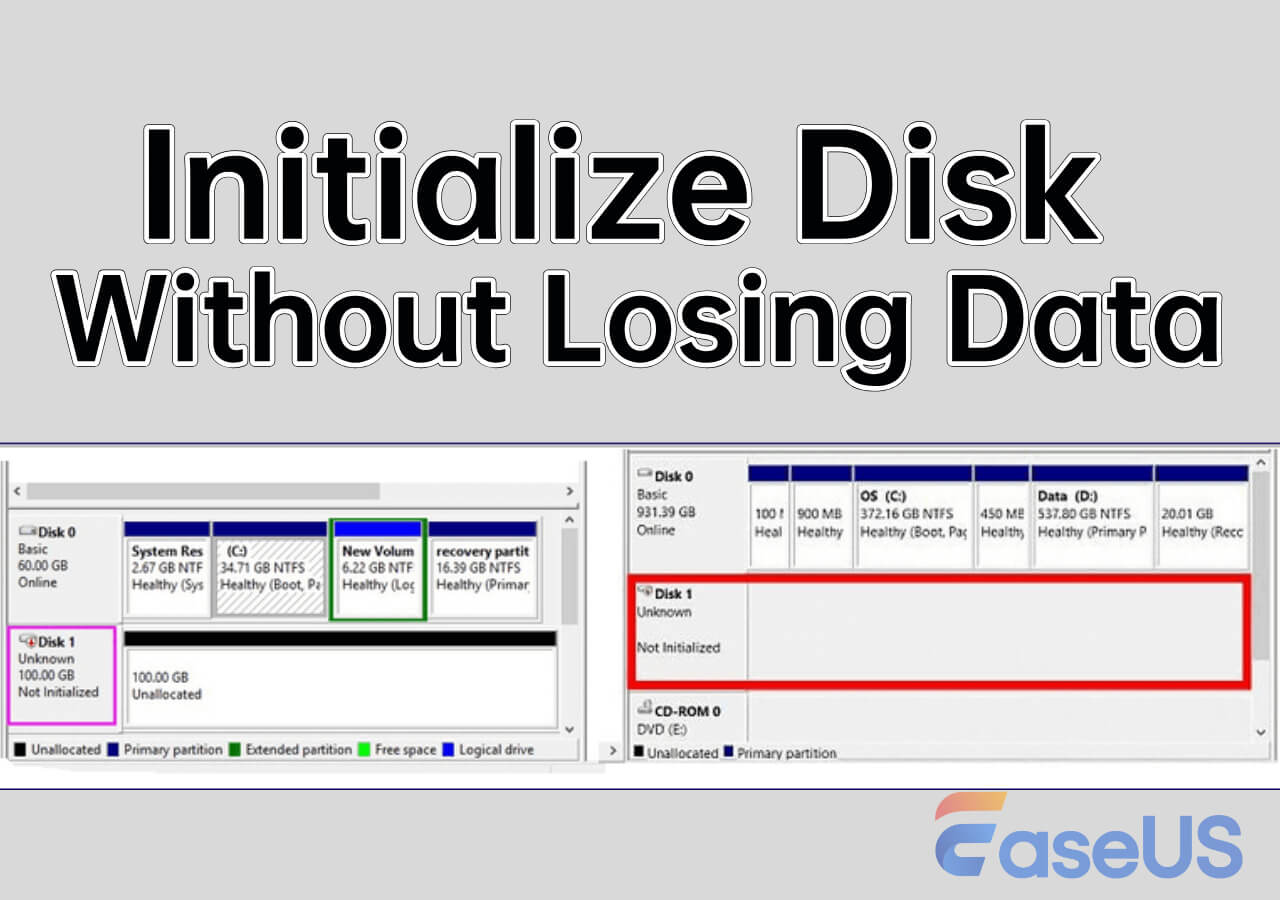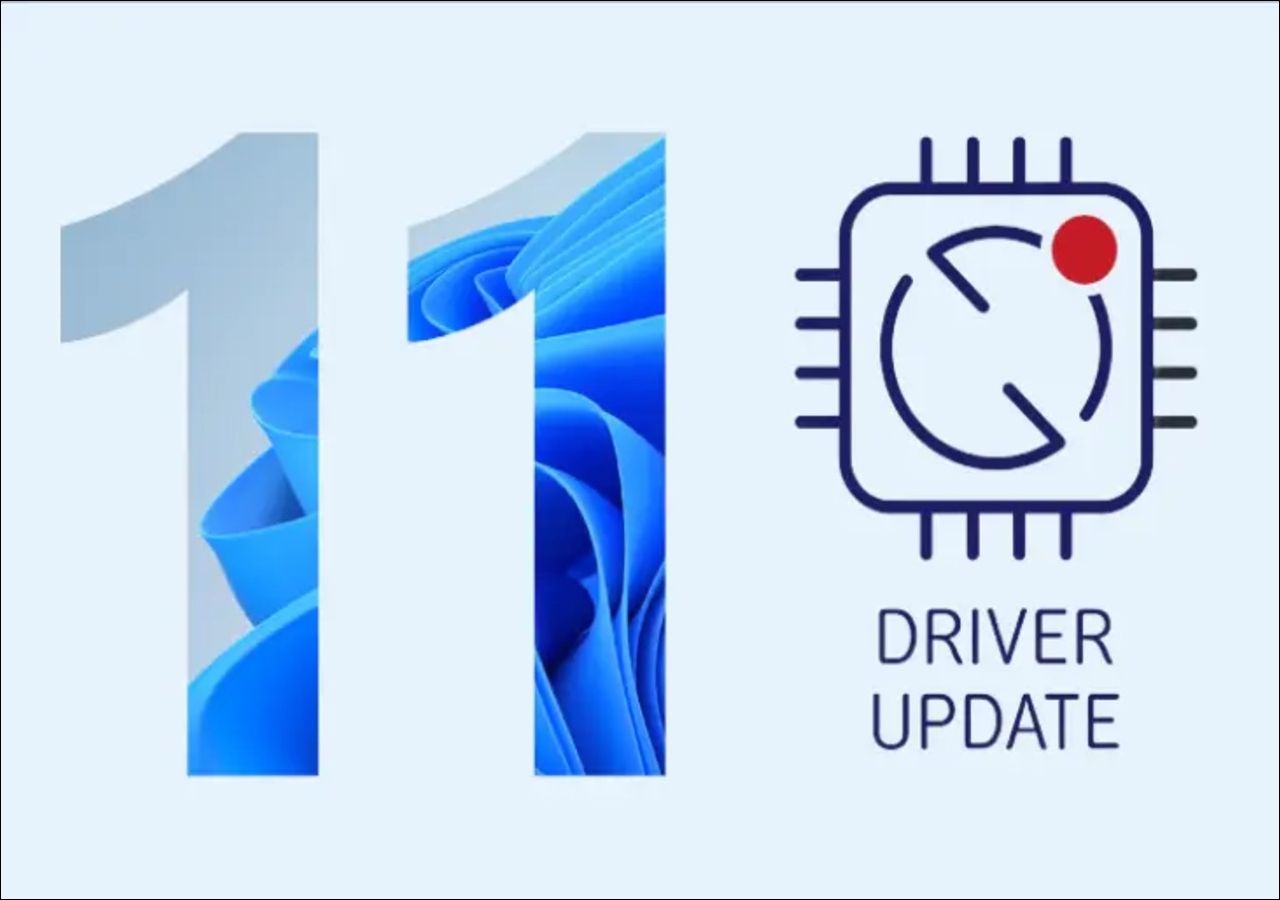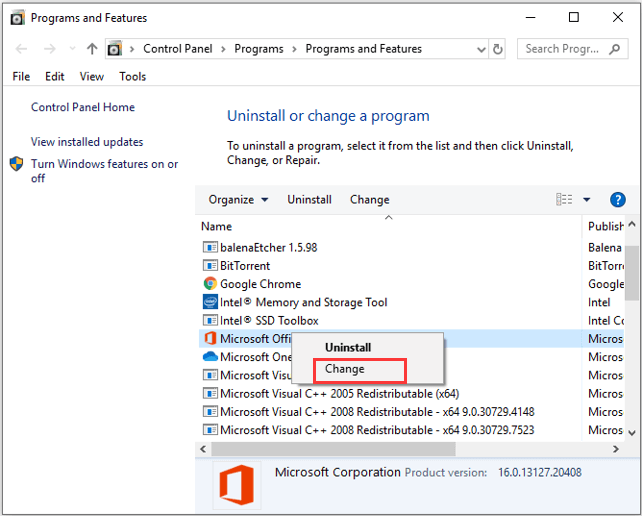-
![]() Bootable Data Recovery Software Full Information | for Beginner
Bootable Data Recovery Software Full Information | for Beginner December 12,2025
December 12,2025 6 min read
6 min read -
![]() How to Fix Download Error - 0x80248007 Windows 10/11
How to Fix Download Error - 0x80248007 Windows 10/11 December 12,2025
December 12,2025 6 min read
6 min read -
![]() Fix Video_Scheduler_Internal_Error on Windows 10/11
Fix Video_Scheduler_Internal_Error on Windows 10/11 December 12,2025
December 12,2025 6 min read
6 min read -
![]()
-
![]() Ways to Fix Windows Error Code 0x800701e3 [HDD Error]
Ways to Fix Windows Error Code 0x800701e3 [HDD Error] December 12,2025
December 12,2025 6 min read
6 min read -
![]() How to Reset Windows 10 Password in 4 Ways (Step-by-Step Tutorial)
How to Reset Windows 10 Password in 4 Ways (Step-by-Step Tutorial) December 12,2025
December 12,2025 6 min read
6 min read -
![]()
-
![]() Initialize Disk Without Losing Data in Windows 10/11
Initialize Disk Without Losing Data in Windows 10/11 December 14,2025
December 14,2025 6 min read
6 min read -
![]() How to Update Drivers on Windows 11: Download USB Drivers [Safe & Easy]
How to Update Drivers on Windows 11: Download USB Drivers [Safe & Easy] December 12,2025
December 12,2025 6 min read
6 min read -
![]() 6 Fixes for Excel File Keeps Closing Automatically
6 Fixes for Excel File Keeps Closing Automatically December 15,2025
December 15,2025 6 min read
6 min read
Page Table of Contents
Check four ways to tell if your computer is 32 or 64 it in Windows 10:
| Workable Solutions | Step-by-step Troubleshooting |
|---|---|
| Fix 1. Check System Type from Settings | Click the Start button and then select "Settings > System". Click "About" on the left panel of the System...Full steps |
| Fix 2. Check System Version Using Command Prompt | Type cmd in the search box and press Enter. Run Command Prompt as administrator. Type systeminfo...Full steps |
|
Fix 3. Check Windows 10 System Type with Run Tool |
Press Win + R keys to open the Run tool. Type msinfo32 in the box and click "OK". The System Information...Full steps |
|
Fix 4. Check Windows System Type in Control Panel |
Open the Control Panel and choose "System". On the system settings screen, click "About". Find Device specifications...Full steps |
When using a computer, it is often necessary to install software or install device drivers for the hardware. At this point, you are often asked whether the computer is 32-bit or 64-bit. Many users are at a loss when asked this question, but choosing the wrong one, you may get stuck and cannot continue. So it's important to know whether your Windows version is 32-bit or 64-bit.
In this article, you will learn how to tell if your computer is 32-bit or 64-bit and get a comprehensive understanding of the difference between 32-bit and 64-bit computers. If you're interested, don't miss it. Let's start now.
How to Tell if Your Computer Is 32 or 64 Bit Windows 10 in 4 Ways
If you don't know or are unsure what version, 32-bit or 64-bit, of Windows 10 your computer is running, take any of the following four ways to check if you have a 32-bit or 64-bit Windows 10.
Method 1. Check System Type from Settings
Step 1. Click the Start button and then select "Settings > System".
Step 2. Click "About" on the left panel on the System Settings window.
Step 3. At the right pane, under Device specifications, find "System type". Then, you will see if your computer is running a 64-bit operating system, x64-based processor, or not.
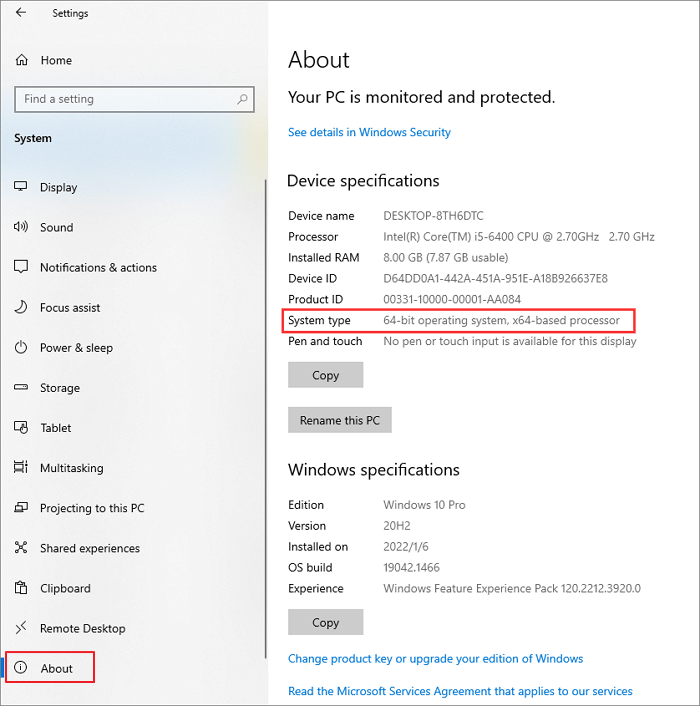
Method 2. Check if the Windows 10 System Is 32-Bit or 64-Bit in CMD
Step 1. Type cmd in the search box and press Enter.
Step 2. Click "Command Prompt" from search results and choose "Run as administrator" at the right.
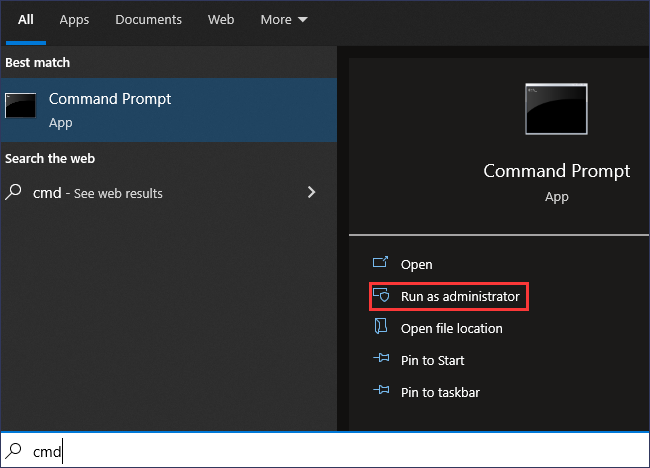
Step 3. In the Command Prompt window, type systeminfo and press Enter.
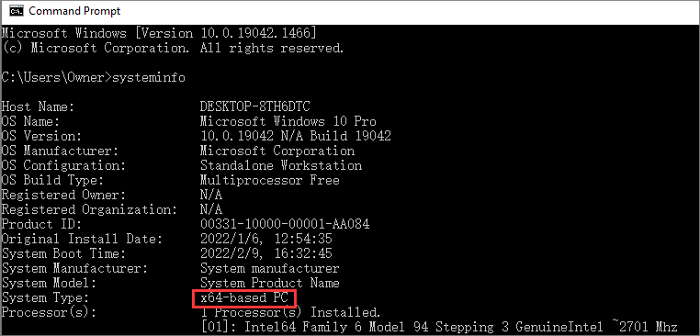
Step 4. The system information will display on the screen. Find System Type and check if your Windows 10 is 32-bit or 64-bit.
Method 3. Check Windows 10 System Type with Run Tool
Step 1. Press Win + R keys at the same time to open the Run tool.
Step 2. In the Run box, type msinfo32 and click "OK".
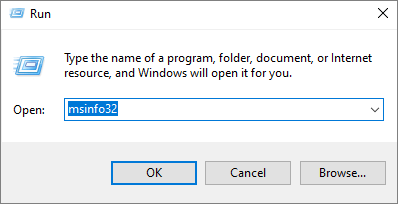
Step 3. The System Information window will pop up.
Step 4. Find "System Type" in the right dialog and check if your Windows is an x86-based PC or an x64-based PC.
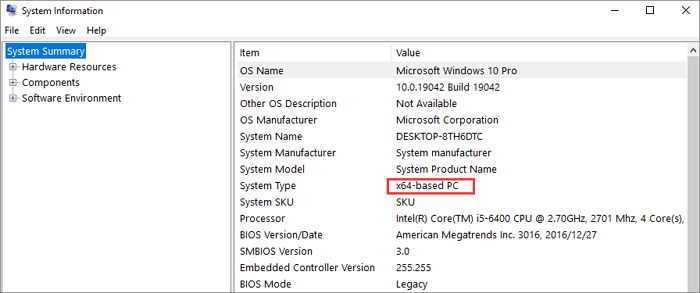
Method 4. Check Windows System Type in Control Panel
Step 1. Open the Control Panel on your computer. Choose "System".
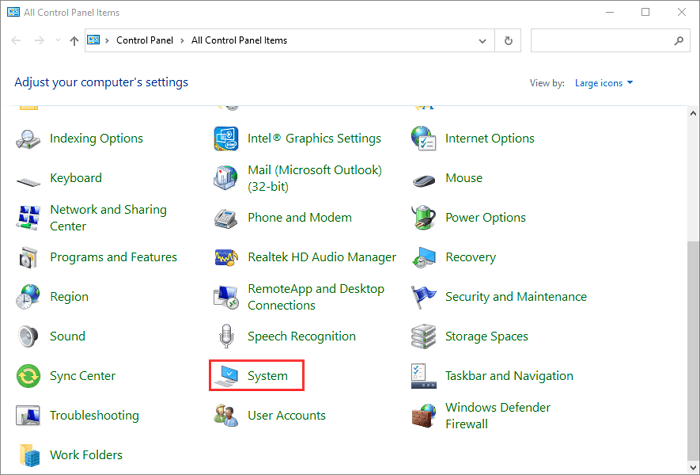
Step 2. On the system settings screen, click "About".
Step 3. Find Device specifications and check the System type like the screenshot shows below.
Related Reading: Windows 10 64-Bit Free Download Full Version
Additional Guide: How to Perform 64-Bit or 32-Bit Windows 10 Data Recovery Without Backup
Whether your computer is 64-bit or 32-bit Windows 10, data loss may happen unexpectedly due to system installation, hard drive problem, or software crash. How to perform Windows 10 data recovery without backup? Try EaseUS Data Recovery Wizard to make it easy.
- Recover deleted Word, Excel, PPT, PDF, photos, videos, audio, emails, and other hundreds of files
- recover deleted files from Recycle Bin, HDD, SSD, USB flash drive, SD card, and external hard drives
- Restore lost data on Windows 10/8.1/8/7/Vista/XP and Windows Server 2019 - 2003
- Retrieve deleted files from Mac computer running macOS 11.2 ~ 10.9
Now, free download this file recovery and repair tool to retrieve lost data on Windows 10 for any reason.
Note: To guarantee a high data recovery chance, install EaseUS data recovery software on another disk instead of the original disk where you lost files.
Step 1. Launch EaseUS Data Recovery Wizard on your Windows 11, Windows 10, Windows 8, or Windows 7 computer. Select the disk partition or storage location where you lost data and click "Search for Lost Data".

Step 2. This recovery software will start scanning the disk to find all lost and deleted files. When the scan process completes, click "Filter" > "Type" to specify lost file types. If you remember the file name, you can also search in the search box, which is the fastest way to find the target file.

Step 3. Preview and restore lost Windows files. You can double-click to preview the scanned files. Then, select the target data and click the "Recover" button to save them to another safe spot in the PC or Cloud drive.

32-Bit and 64-Bit Windows: Frequently Asked Questions
Here are more helpful answers to some common questions about the 32-bit and 64-bit versions of Windows.
1. What's the difference between 32-bit and 64-bit Windows?
The terms 32-bit(x86) and 64-bit(x64) refer to the way a computer's processor (also called a CPU), handles information. 64-bit computers are theoretically more powerful and faster at processing data than 32-bit computers. Here are the main differences:
- Different computing abilities: 64-bit systems are theoretically twice as fast as 32-bit systems, and their memory addressing is different.
- The maximum running memory is different: 32-bit computers only support the maximum 4G (generally only 3.25G or so), and 64-bit computers can support 128G or even larger.
- Support different software versions: a 32-bit computer can only run 32-bit software, while a 64-bit computer can run 32-bit software as well as 64-bit software.
- Different supported systems: 32-bit computers support 32-bit systems, while 64-bit computers support both 32-bit and 64-bit systems.
2. How can I tell if my computer is running a 32-bit or 64-bit version of Windows 11?
The way to check the system type of Windows 11 is the same as that on Windows 10:
Step 1. Choose "Start > Settings > System > About".
Step 2. Find System type under "Device specifications".
Step 3. See if your computer is running a 32-bit or 64-bit version of Windows.
3. Is my computer 32 or 64-Bit Windows 8?
Find the operating system information in Windows 8.1 or Windows RT 8.1 in these ways:
Step 1. Select "Settings" and click "Change PC settings".
Step 2. Choose "PC and devices > PC info".
Step 3. Under PC, you will see the System type is a 32-bit or 64-bit version of Windows.
4. How to tell if your computer is 32 or 64-bit Windows 7?
Step 1. Click the Windows icon. Type computer in the search box.
Step 2. Choose "Computer" from search results. Right-click it and choose "Properties".
Step 3. Under Windows edition, you'll see which version and edition of Windows 7 your computer is running.
The Bottom Line
There are noticeable differences in hardware and software compatibility between 32-bit and 64-bit computers. Knowing whether your computer is 32-bit or 64-bit will help you use it properly. You can use the ways above to check which version is your system type on Windows 11, Windows 10, Windows 8, and Windows 7.
If you have any further problems on Windows computer, including Windows file restoring, feel free to contact us via email or live chat.
Was this page helpful?
-
Brithny is a technology enthusiast, aiming to make readers' tech lives easy and enjoyable. She loves exploring new technologies and writing technical how-to tips. In her spare time, she loves sharing things about her game experience on Facebook or Twitter.…
-
Evan Galasso is a digital forensics and data recovery engineer with over 10 years of experience in the field. He presents opinions on the current state of storage media, reverse engineering of storage systems and firmware, and electro-mechanical systems of SSDs and HDDs.…

20+
Years of experience

160+
Countries and regions

72 Million+
Downloads

4.9 +
Trustpilot Score


Free Data
Recovery Software
Recover data up to 2GB for free!
